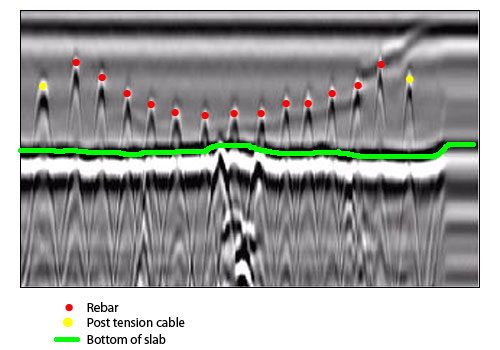Enhancing Project Preparation and Execution Through Advanced Concrete Scanning Techniques
In the world of task preparation and insight, implementation and precision are essential components that can make the difference between success and troubles. Advanced concrete scanning methods have become an innovative tool readied to raise the standards of task administration within the building industry. By using advanced technology, these methods provide a glance into the architectural integrity of a structure also prior to the first brick is laid. The implications of such innovations are profound, assuring a paradigm change in how tasks are approached and supplied.
Advantages of Advanced Concrete Scanning Strategies

Improved Accuracy in Project Assessments
Enhancing task analyses with sophisticated concrete scanning techniques dramatically increases the precision and integrity of building and construction examinations. By employing cutting-edge scanning modern technologies such as ground-penetrating radar (GPR) and 3D imaging, job teams can currently get detailed understandings right into the condition of concrete frameworks, determining potential imperfections or weak points that may not show up to the naked eye. This improved level of precision in job assessments makes it possible for building professionals to make more informed choices relating to repair work and upkeep techniques, bring about improved general project end results.
Furthermore, the raised accuracy in task analyses accomplished via sophisticated concrete scanning strategies assists in minimizing the danger of unanticipated problems during the building stage. By proactively finding hidden anomalies within concrete frameworks, such as rebar rust or gaps, project groups can resolve these issues beforehand, avoiding expensive hold-ups and rework later in the task lifecycle. Inevitably, the improved accuracy in task assessments helped with by innovative concrete scanning techniques contributes to higher performance, cost-effectiveness, and top quality in construction projects.
Very Early Recognition of Architectural Challenges
Early detection of architectural difficulties plays an essential function in making certain the honesty and safety of concrete structures throughout the construction process. Determining possible concerns at an onset allows for timely intervention, preventing expensive rework, routine hold-ups, and security dangers. Advanced concrete scanning strategies, such as ground-penetrating radar (GPR) and 3D imaging, make it possible for task groups to reveal covert defects, spaces, reinforcement design inconsistencies, and other anomalies that could compromise the framework's security.
By applying these strategies throughout the preparation and implementation phases, building professionals can proactively address structural obstacles before they rise right into major problems. As an example, discovering insufficient concrete cover over reinforcement bars at an early stage can stop corrosion and structural weakening in the future - RainierGPR Service Areas. Additionally, determining variations in concrete density or density can aid enhance product usage and make certain consistent stamina buildings throughout the structure
Eventually, early identification of architectural obstacles through innovative concrete scanning not just improves the general quality and resilience of the construction but likewise contributes to a more secure developed environment for passengers and individuals.
Improved Precaution in Construction
The execution of durable safety protocols is vital in the building and construction sector to alleviate dangers and safeguard the health of stakeholders and workers. To boost safety steps, building and go to this web-site construction business are increasingly taking on technical developments such as wearable tools that check employees' vital indicators and find potential wellness problems in real-time. By focusing on security through the unification of sophisticated modern technologies and detailed training programs, construction tasks can dramatically minimize accidents and produce a secure working setting for all included.
Streamlining Task Administration Processes
To maximize functional performance and ensure project success in the construction industry, a focus on improving job management processes is important. By executing effective job administration processes, construction jobs can decrease hold-ups, minimize expenses, and enhance general productivity.

Conclusion
In final thought, the usage of sophisticated concrete scanning techniques provides numerous benefits for job planning and implementation. These strategies give better precision in job assessments, early recognition of architectural difficulties, improved safety and security procedures in building, and streamlined project monitoring procedures. Integrating these approaches right into project workflows can inevitably cause much more efficient and effective results in building projects.
Inevitably, the enhanced accuracy in job click this link assessments facilitated by advanced concrete scanning strategies contributes to greater performance, cost-effectiveness, and quality in building and construction jobs. RainierGPR Service Areas.
To optimize functional effectiveness and guarantee task success in the building industry, a focus on streamlining task management procedures is vital. By applying effective task administration procedures, building tasks can minimize hold-ups, reduce prices, and improve general productivity. By simplifying task management procedures through technology assimilation, clear communication, and go to the website data-driven methods, construction projects can accomplish better efficiency, cost-effectiveness, and successful outcomes.
These strategies provide better accuracy in job assessments, early identification of architectural difficulties, boosted safety procedures in building, and structured project administration procedures.